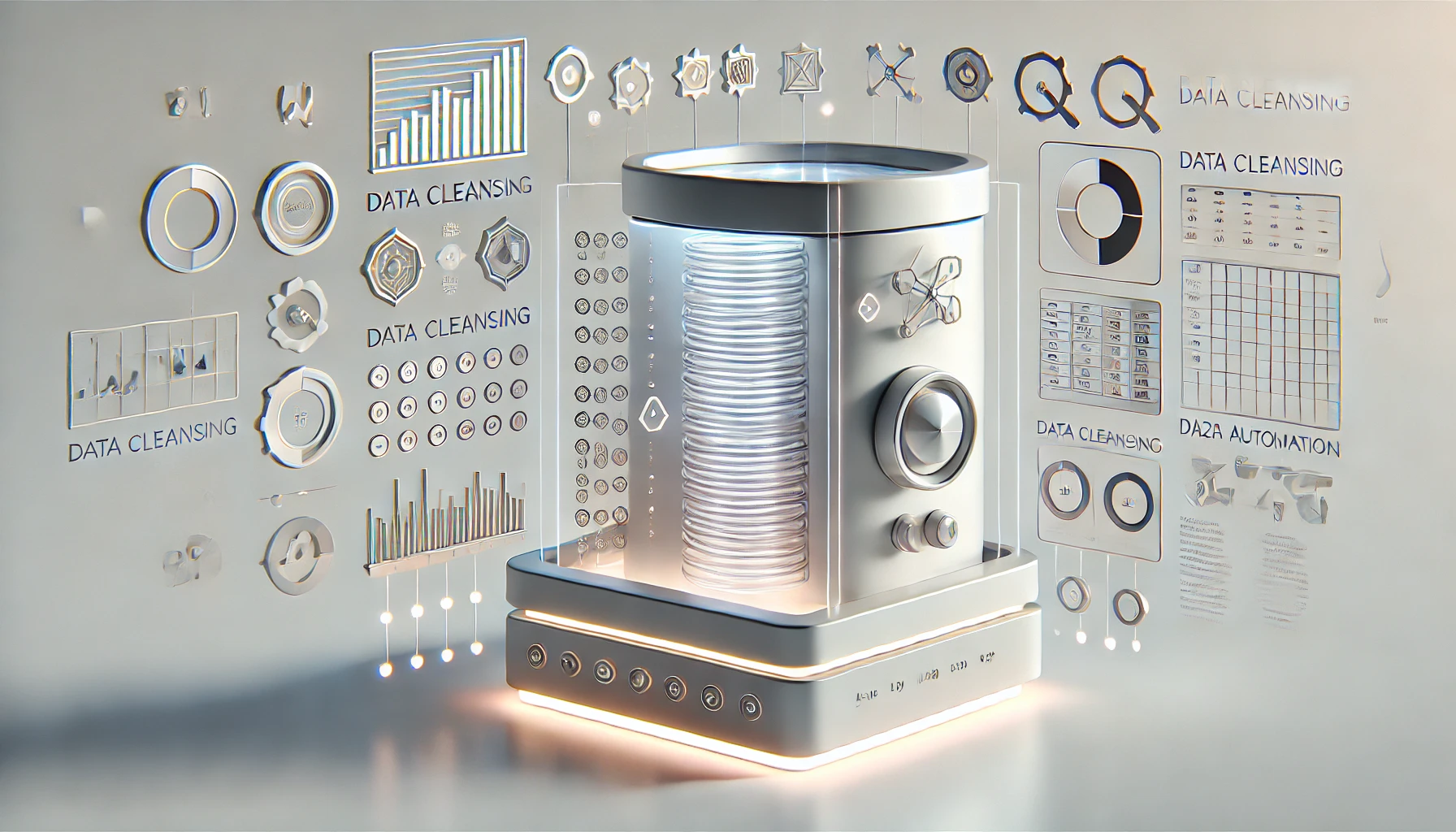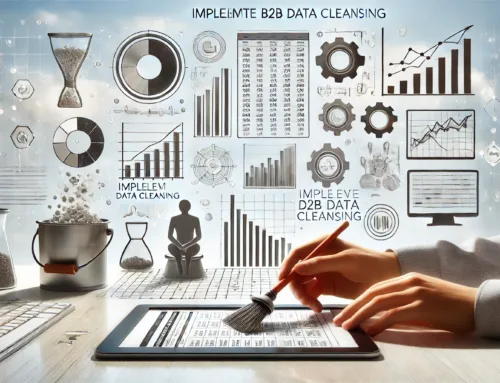To automate B2B data cleansing, selecting the right tools, defining clear automation rules, and implementing effective error removal processes are key. But what comes next after setting up these initial steps? How can you ensure that your automated data cleansing remains efficient and up-to-date? Stay tuned to discover the crucial strategies for maintaining data accuracy and optimizing your B2B data cleansing automation for long-term success.
Select Appropriate Tools
When it comes to automating B2B data cleansing, selecting the appropriate tools is crucial for efficiency and accuracy. Two key components to consider when choosing tools for automating B2B data cleansing are data validation and data enrichment.
Data validation tools are essential for ensuring that the information in your database is accurate, complete, and consistent. These tools help identify errors, duplicates, and inconsistencies within your data, allowing you to clean and standardize it effectively. By automating data validation processes, you can save time and reduce the risk of human error.
On the other hand, data enrichment tools enhance your existing data by adding valuable information from external sources. These tools can improve the quality of your database by filling in missing details, updating outdated information, and providing insights that can help you better understand your customers and market trends.
Define Automation Rules
To effectively automate B2B data cleansing, defining automation rules is a critical step in ensuring consistency and accuracy in your data management processes. Data profiling is key to understanding the structure and quality of your data. By analyzing data profiles, you can identify inconsistencies, errors, and duplicates that need to be addressed through automation rules.
Automation rules should be designed to streamline workflows by standardizing data formats, removing irrelevant information, and enhancing data quality. For example, rules can be set to automatically correct misspellings, enforce naming conventions, and validate data against predefined criteria.
Test Automation Process
Initiating the testing of your automated data cleansing process is a pivotal phase in ensuring its efficacy and reliability. Data validation plays a crucial role in this phase, helping you confirm that the cleansing algorithms are functioning as intended. By systematically validating the data at each stage of the cleansing process, you can identify any anomalies or errors that may arise.
During the test automation process, it is essential to set up comprehensive test cases that cover various scenarios to validate the effectiveness of your cleansing algorithms. These test cases should encompass both typical and edge cases to ensure the robustness of your automated data cleansing solution.
Moreover, the systematic execution of these test cases will allow you to pinpoint any potential weaknesses or areas for improvement in your cleansing algorithms. By iteratively refining your automated data cleansing process through rigorous testing, you can enhance its accuracy and efficiency, ultimately leading to more reliable data outcomes.
Implement Automation
For successful implementation of automation in the data cleansing process, it is crucial to establish clear objectives and a well-defined strategy. Begin by identifying the key areas where automation can streamline processes and improve efficiency. Data validation should be a primary focus to ensure accuracy and consistency in your B2B data. Implement automated checks to verify the integrity of incoming data and flag any inconsistencies for further review.
Error detection plays a vital role in the automation process. Set up mechanisms to automatically detect common errors such as duplicate entries, missing information, or formatting issues. By proactively identifying and addressing errors, you can maintain a high level of data quality throughout your systems.
Create a systematic approach to integrate automation tools seamlessly into your data cleansing workflow. Regularly review and update your automation processes to adapt to changing data needs and evolving technologies. By continuously optimizing your automation strategy, you can drive efficiency and accuracy in your B2B data cleansing efforts.
Monitor Automation Effectiveness
To ensure the success of your automated B2B data cleansing processes, it is crucial to continuously measure the impact of automation on your data quality. By monitoring key performance indicators, you can effectively analyze the accuracy and effectiveness of the automated data cleansing tools in place. This data-driven approach enables you to make informed decisions to optimize and refine your automation strategies for enhanced data quality and efficiency.
Measure Automation Impact
Implementing automation in B2B data cleansing processes necessitates the regular measurement of its impact to ensure optimal effectiveness. Conducting an Automation ROI analysis is crucial to determine the return on investment achieved through automated data cleansing. This analysis involves comparing the costs associated with implementing and maintaining automation tools against the benefits gained, such as time saved and improved accuracy.
Additionally, ongoing data quality assessment is essential in measuring the impact of automation on data cleansing. By regularly evaluating the quality of data before and after automation implementation, you can quantify improvements in data accuracy, completeness, and consistency. This assessment provides tangible evidence of the effectiveness of automation in enhancing data quality and streamlining cleansing processes.
To measure the impact of automation accurately, establish key performance indicators (KPIs) related to data quality and operational efficiency. Track these KPIs consistently over time to identify trends, areas for improvement, and the overall success of automated data cleansing efforts.
Analyze Data Accuracy
As you proceed with the automation of B2B data cleansing processes, the focus shifts to analyzing data accuracy to continually monitor the effectiveness of automation. Data validation plays a crucial role in ensuring the accuracy of your cleansed data. By setting up validation rules within your automated processes, you can verify the integrity and quality of the data being processed.
Error detection mechanisms are equally important in maintaining data accuracy. Implementing error detection algorithms can help identify inconsistencies, duplicates, or missing information in your dataset. By regularly analyzing error reports generated by your automated system, you can pinpoint areas that require attention and fine-tuning.
To effectively analyze data accuracy, establish key performance indicators (KPIs) related to data quality metrics. These KPIs could include measures like data completeness, consistency, and timeliness. By tracking these metrics over time, you can gain insights into the overall effectiveness of your automated data cleansing processes and make informed decisions on further optimization.
Refine Rules Periodically
For optimal data cleanliness in your B2B processes, it is essential to refine rules periodically. Data validation is crucial to ensure accuracy and reliability in your database. By regularly reviewing and updating your data validation rules, you can maintain high-quality information and prevent errors from creeping in.
Rule adjustments play a key role in keeping your data cleansing processes efficient and effective. As business dynamics evolve, so should your data cleansing rules. Periodically refining these rules allows you to adapt to changing requirements, industry standards, and customer preferences.
To refine rules effectively, start by analyzing the performance of your current rules. Identify any patterns of inaccuracies or inconsistencies in your data that may indicate the need for adjustments. Utilize automated tools to streamline the rule refinement process and ensure consistent data quality across your B2B operations.
Maintain Data Accuracy
To maintain data accuracy effectively, you must prioritize ongoing monitoring and validation. Data validation is crucial to ensure the integrity of your database. Here’s how you can maintain data accuracy:
- Regular Data Audits: Conduct routine audits to identify inconsistencies, duplicates, and outdated information. This proactive approach allows you to address issues promptly.
- Implement Error Detection Tools: Utilize automated error detection tools to flag anomalies such as missing fields, incorrect formats, or discrepancies in data entries. These tools can help streamline the validation process.
- Establish Data Quality Metrics: Define key performance indicators (KPIs) related to data accuracy and set benchmarks to measure the success of your data cleansing efforts. Monitoring these metrics allows you to continuously improve the quality of your data.
Frequently Asked Questions
How Do I Handle Data Privacy and Security Concerns During Automation?
To handle data privacy and security concerns during automation, ensure compliance management by implementing robust encryption protocols. Regularly update security measures, conduct audits, and train staff on best practices to safeguard sensitive information effectively.
What Are the Common Challenges Faced When Implementing Data Cleansing Automation?
When implementing data cleansing automation, common challenges include ensuring data accuracy and maintaining process efficiency. It’s crucial to address these issues to optimize the automation workflow and achieve accurate, efficient data cleansing results.
Can Automation Processes Be Customized for Different Types of Data Sources?
Yes, automation processes can be customized for different types of data sources. By incorporating data validation and source mapping, you can ensure accuracy and efficiency in handling various data sets, tailoring the automation to specific requirements for optimal results.
How Can I Ensure Seamless Integration With Existing CRM or ERP Systems?
To ensure seamless integration with existing CRM or ERP systems, focus on system compatibility and data mapping. Implement integration strategies for CRM optimization. By customizing automation processes, you can streamline data cleansing procedures and enhance overall system efficiency.
What Measures Should Be Taken to Prevent Data Duplication Errors During Automation?
To prevent data duplication errors during automation, you must prioritize data validation and error detection. Implement stringent validation checks and utilize advanced algorithms for error detection. Regularly audit and cleanse your databases to maintain data integrity and accuracy.




